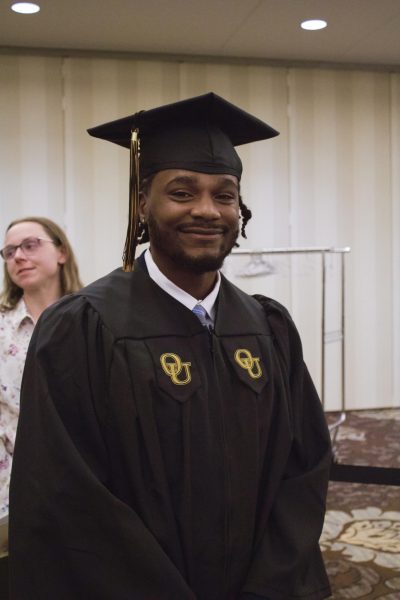Grant for development of Arctic soil emissions sensor
Professor Xiangqun Zeng and Assistant Professor Ziming Yang have been working on a development of a cheaper and more efficient multimodal sensor that will help face the challenges of measuring carbon dioxide and methane emissions in the Arctic soil and the environmental and economic effects. The National Science Foundation (NSF) awarded these Oakland University chemistry professors a two-year $294,536 grant for their research project.
“It’s my frontier,” Zeng said. “It’s my field. I like to do innovative research. I like challenges. This is an area we can have tremendous opportunity [in] because our field’s work has been down, so that can open opportunities.”
This project, known as Navigating the New Arctic, is a part of the NSF’s 10 Big Ideas. For a project to meet the Big Idea criteria, it must have compelling research, long-term commitment and the ability to provide new opportunities.
“We got lots of funding for this field,” Zeng said. “I just think that this is an excellent opportunity for me to push it another boundary further.”
Zeng is an analytical chemist with current research focusing on bioanalytical and electroanalytical electrochemistry. Yang is an environmental chemist with interest in organic geochemistry and biogeochemistry.
Another addition to the project to help develop the prototype and build the sensors is Professor Yong Xu, from the department of electrical and computer engineering at Wayne State University.
“I will be in charge of the engineering development of the proposed novel sensor for in-situ and continuous CH3 and CO2 monitoring in Arctic soils,” Xu said.
The NSF Big Idea has four stages. First is the development of the idea and the submission. Next is creating a video pitch and public comment. The third stage is the virtual blue-ribbon panel interviews. This leads to stage four, which is the selections of winners and awarding of prizes.
With over 300 proposal submissions, only 10 will end up receiving the grants and have the ability to work on and improve their ideas.
“The grant will help to develop novel soil sensors for Arctic tundra, potentially generating reliable field data needed to improve climate change models and deepen our understanding of Arctic carbon cycles in a warming environment,” Xu said.
Zeng and Yang started this process due to the large amount of soil organic matter (SOM) in the Arctic. The sensors will help further knowledge on the effects of permafrost warming on the Arctic soil carbon release and the effects the carbon cycling process has on the Arctic ecosystem. The information collected through this experiment will help the development of new ways to manage soils and natural resources in cold environments.
The grant covers a two-year period, from Jan. 1, 2019 to Dec. 31, 2020, and field testing of the sensor prototype will be taking place in Barrow, Ala.
“From my perspective, the overall outcome will be a novel soil sensor for in-situ monitoring of greenhouse gases in Arctic tundra and a better understanding of carbon cycles enabled by the new sensor,” Xu said.







